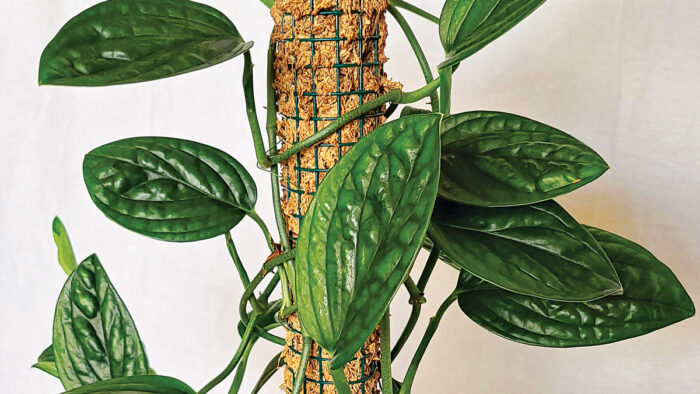
It seems like monsteras (Monstera spp. and cvs., Zones 10–12) are everywhere these days. Swiss cheese plant (M. deliciosa), with its large leaves full of fenestrations, or holes, is the most common monstera available and can been seen gracing the pages of nearly every architectural and design magazine. I love monsteras because there are at least 48 species and an abundance of varieties. They feature a diverse mix of shapes, sizes, colors, and textures. I have many growing throughout my home, because no matter the variety, they all create major visual impact. Caring for them can be a challenge, particularly if you’re a new indoor gardener. But don’t worry! You can grow them successfully if you follow a few simple rules.
Tips for Growing Monsteras
1. Get the light right
Monsteras prefer bright, indirect light. Most can withstand dimmer situations, but growth will be slower, and the leaves will not develop the beautiful fenestrations that make monsteras so coveted. How much light to provide your monstera depends on the thickness of the leaves. Plants with relatively thick and waxy leaves, such as M. karstenianum and M. deliciosa, can handle a few hours of direct sunlight each day. This should be early morning or evening sun; avoid placing them in a spot where they will receive direct afternoon sun. Thinner-leaved species such as M. adansonii or M. siltepecana burn much more easily and won’t tolerate direct sunlight.
2. Moisture is key
Monsteras are native to tropical rainforests, where they receive large amounts of rain on a regular basis. However, in your home, monsteras require only moderate levels of water. Rather than watering your plant on a regular schedule, assess the moisture level of the soil before giving your plant another drink. Push your index finger into the soil all the way to the first knuckle. If the soil is dry to a depth of 1 to 2 inches, it’s time to give it a good soaking. If you find your soil is staying wet for too long, you may want to amend it with orchid bark and perlite to ensure that it drains more quickly. Soggy soil can lead to root rot, which is the quickest killer of monsteras. Never let water sit in the tray beneath your plant’s pot.
3. Increase humidity for better growth
Humidity is another important factor. While monsteras don’t like overly wet soil, they love environments with high humidity. They can survive in average home humidity but will thrive and grow even more prolifically if you increase the humidity. An easy method for doing so is placing a fine-mist humidifier near your monstera. You can also place the plant on a tray of pebbles and then fill it with as much water as possible without letting the water touch the plant’s pot. As the water evaporates, it releases moisture into the air.
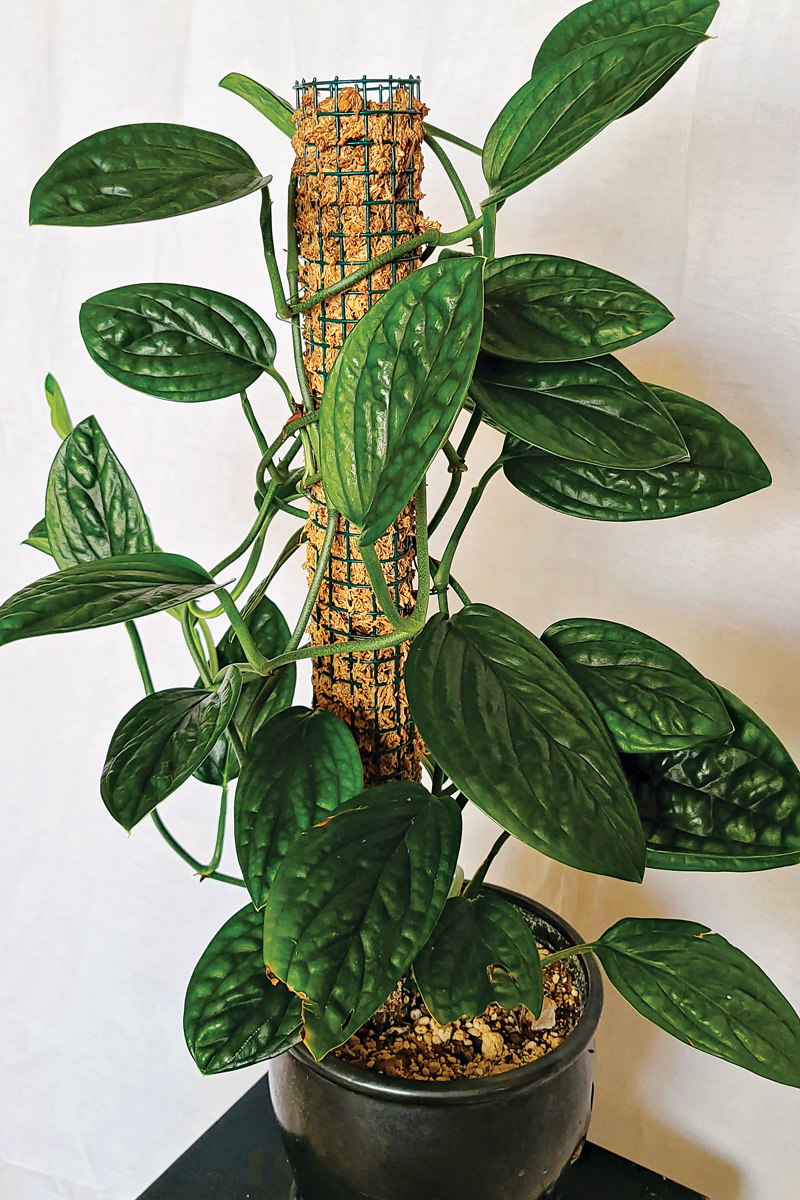
Great Monstera Plant Varieties
Peru monstera behaves like a succulent
Name: M. karstenianum (syn. Philodendron opacum)
This monstera is a gorgeous vine that can climb or trail as a hanging plant. Peru monstera has small, heavily textured (bullate), glossy leaves. This thick, almost succulent-like foliage allows it to go for longer periods of time between waterings. But be sure not to let the soil dry out completely. Once the leaves begin to curl, it’s time to give your plant a good soaking. Although you can grow this plant as a trailer, you’ll see the fastest growth by giving it something to climb.

Shingle plant is worth hunting for
Name: M. dubia
A lesser-known variety, shingle plant is one of the smaller species of monstera. Because this variety is usually sold only in juvenile form, you won’t see the iconic fenestrations that make it easily recognizable as a monstera. Over time, the leaves may develop fenestrations, although that is rare when the plant is kept in a home environment. But even without holes, the leaves are a show-stopping feature of this species. They are heart-shaped with gorgeous silver streaks. Moreover, the leaves shingle, meaning they grow flat against the surface they are allowed to climb. You’ll need to supply the plant with a wooden plank or moss pole to climb.
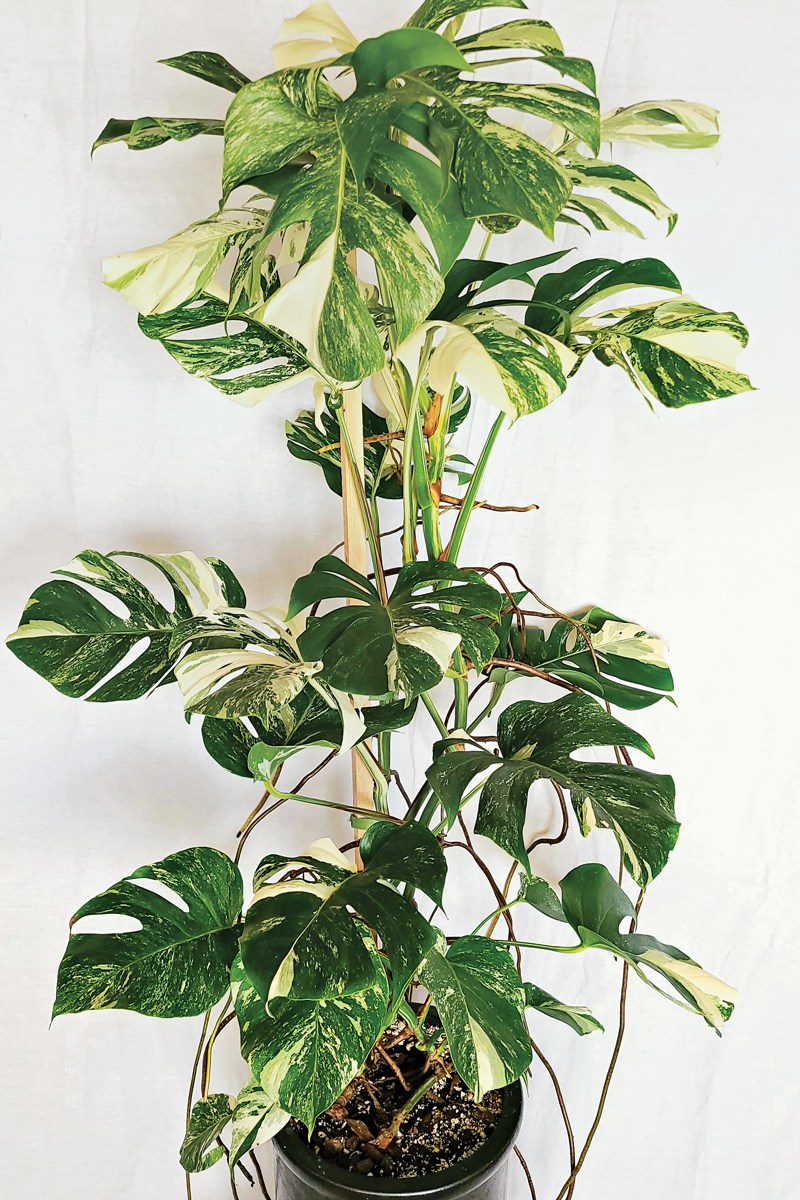
Variegated Swiss cheese plant is a standout like no other
Name: M. deliciosa ‘Albo Variegata’
It’s impossible to talk about monsteras without mentioning this beauty. It has taken the world by storm in the last couple of years, commanding some of the highest prices of any houseplant out there. (Some have sold for well into the thousands.) When you see how striking it is, you’ll quickly understand why it is so sought after by collectors. Variegated Swiss cheese plant requires high humidity, even moisture, and bright, indirect light. You must also carefully monitor the variegation, which is the result of an unstable genetic mutation. If the plant begins to revert to producing all green leaves, you’ll have to cut below the green node of the leaf to maintain the variegation.
Pests and diseases that can affect monsteras
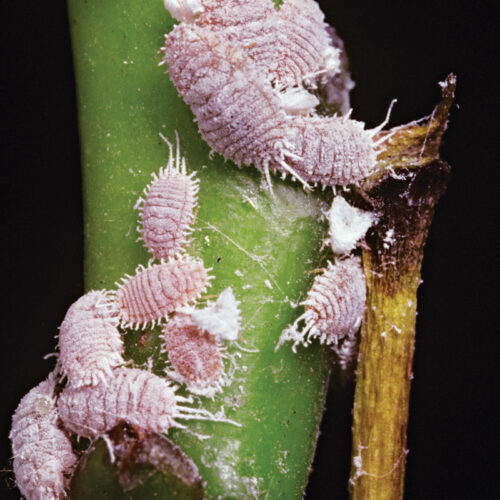
Pests
The most common pests affecting monsteras are spider mites and mealybugs (pictured). To reduce the risk of infestation, routinely wipe down the leaves of your plants with a damp cloth. This will also make your plant look its best and allow it to absorb more sunlight, which dust can block. Advanced infestations of both spider mites and mealybugs produce yellowing around the edges of the leaves and small yellow spots where the pests have sucked sap from the leaves.
If you happen to notice pests on your plant, wipe the leaves with a gentle organic product such as neem oil or horticultural soap. In a pinch, you can also use very mild, diluted soap such as dishwashing liquid or castile soap. While pests will sometimes infest a plant even under perfect conditions, the presence of pests is frequently an indicator of plant stress. Make sure your plants have optimal growing conditions. Also, before bringing a new plant home, inspect it thoroughly for pests.
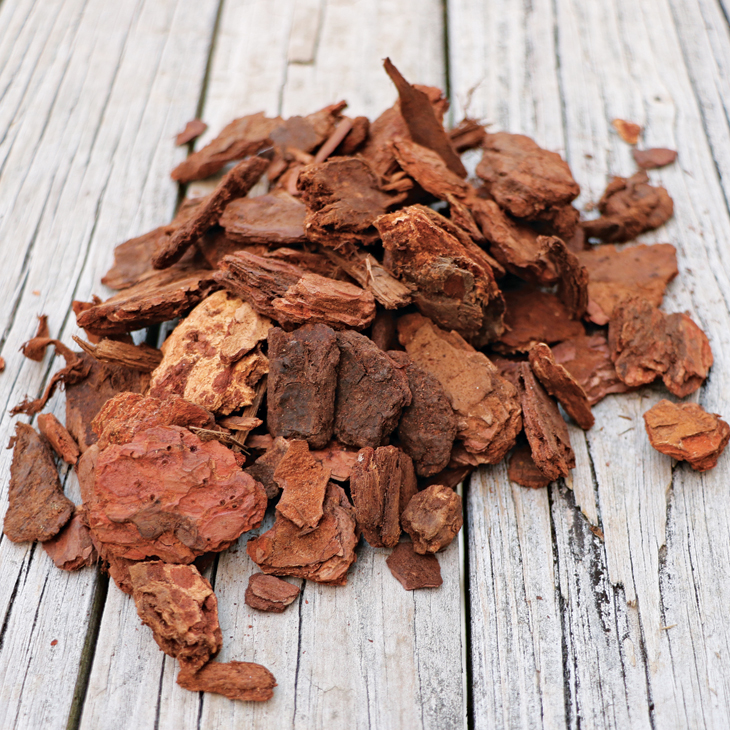
Diseases
Root rot can occur if you water your monstera too frequently, give it the wrong soil, or place it in a pot without drainage holes. You may notice yellowing of leaves, stunted growth, rotting areas near the base of the plant, or brown, mushy roots, all of which indicate root rot. To treat root rot, take the plant from its pot and remove as much soil as possible without damaging healthy roots. Then clean and sterilize the pot and refill it with a well-draining soil amended with orchid bark (pictured). Also, make sure that your pot is not too large, as excess soil can hold on to moisture.
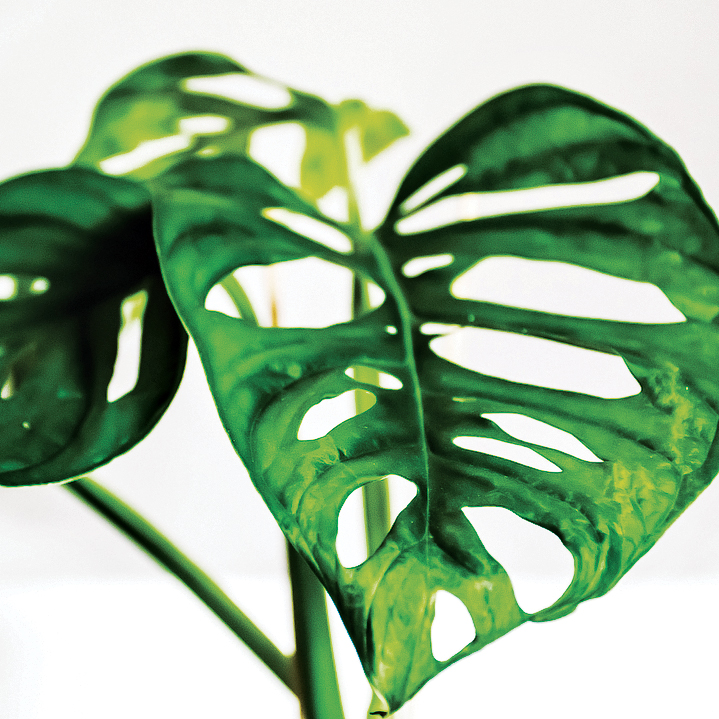
One uncommon but incurable disease you may also encounter is mosaic virus, which can spread from plant to plant. Your monstera is most likely to get this disease if you order it from an online seller, especially if it ships from overseas. Patterned discoloration on leaves is a common symptom (pictured). Unfortunately, that is similar to a symptom of an overwatering or lighting problem, making this disease difficult to identify. Because mosaic virus is incurable, the best remedy is prevention. If you are buying a monstera online, make sure that the seller has a phytosanitary certification. Wash your hands between handling plants, sterilize your tools, and always quarantine new plants for at least two weeks when you first bring them into your home.
Demetri Broxton has been caring for indoor plants since childhood and is now the owner of over two hundred houseplants. He chronicles his plant journey on his Instagram account, @the_botanical_blasian.
Fine Gardening Recommended Products
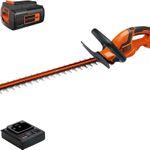
BLACK+DECKER 40V MAX Hedge Trimmer, Cordless, 24-Inch Blade, Battery and Charger Included (LHT2436)
Fine Gardening receives a commission for items purchased through links on this site, including Amazon Associates and other affiliate advertising programs.
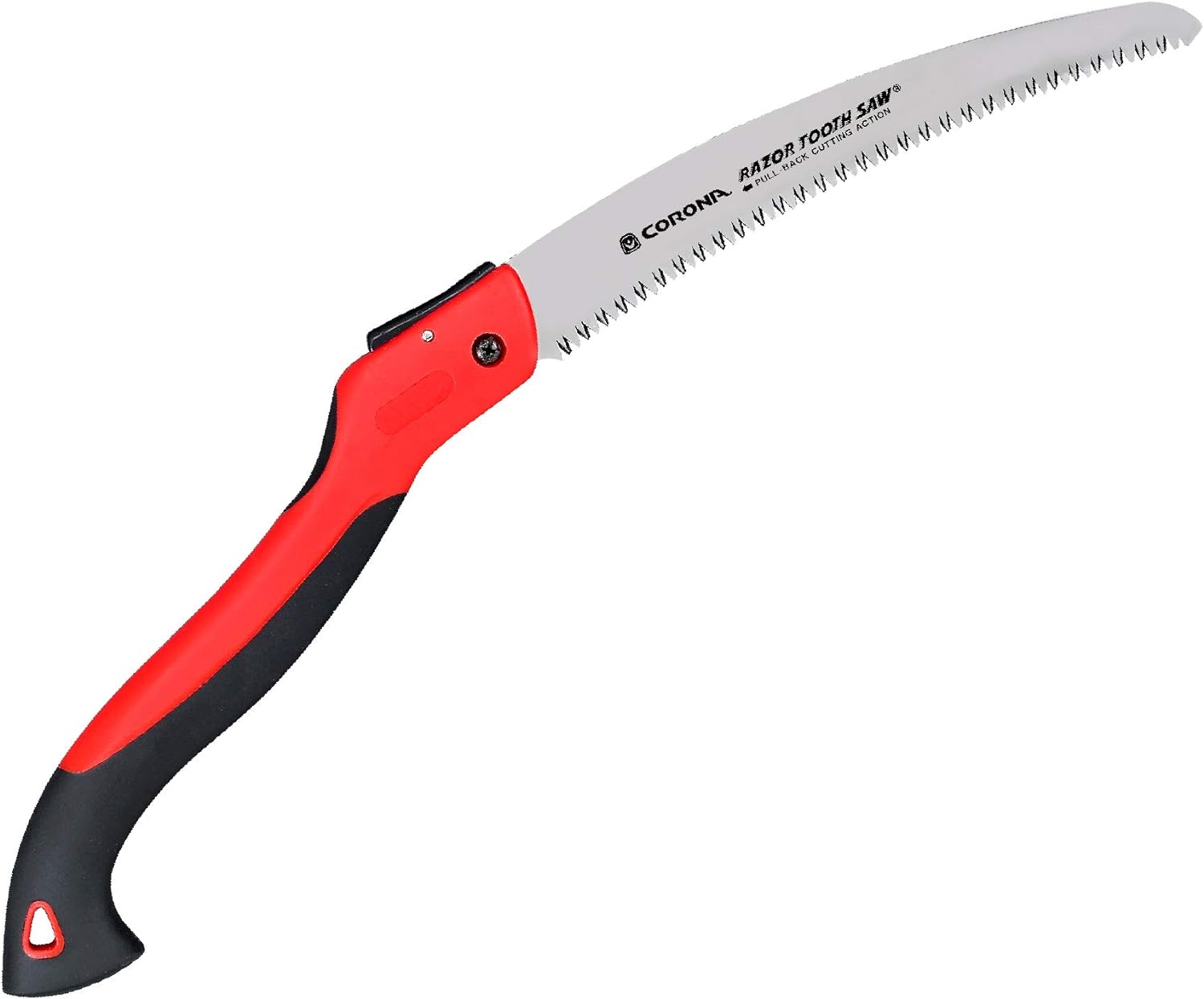
Corona Tools 10-Inch RazorTOOTH Folding Saw
Fine Gardening receives a commission for items purchased through links on this site, including Amazon Associates and other affiliate advertising programs.

Sun Joe Cordless Telescoping Pole Chain Saw
Fine Gardening receives a commission for items purchased through links on this site, including Amazon Associates and other affiliate advertising programs.


















Comments
Log in or create an account to post a comment.
Sign up Log in